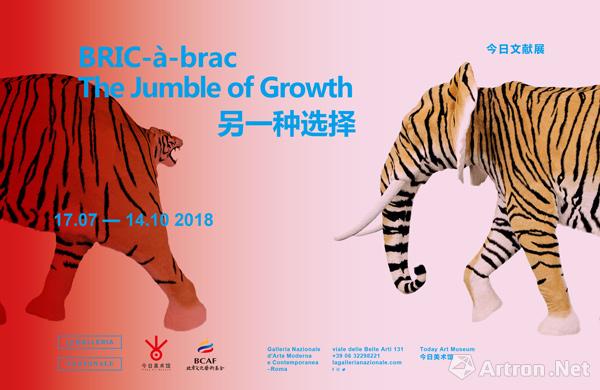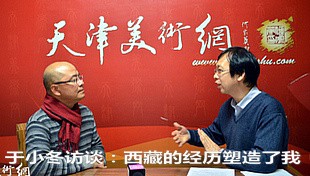- 公告
- 展览
- 讲座
- 笔会
- 拍卖
- 活动



前言
天津美术网讯 本次展览不仅探索新兴市场激增所带来的全球经济、社会、文化的变革进程,而且检视了艺术介入这一变革的多种方式及带给文化、社会和个体的影响。
法语:bric-à-brac,泛指混杂的、不规则事物的集合,并隐含混乱之意。巧合地是,该词组的第一个词 (bric)是金砖四国英文首字母缩写组合——巴西(第七大经济体),俄罗斯(第十三),印度(第六),中国(第二)。“金砖四国”一词由经济学家吉姆·奥尼尔于2001年首次提出,旨在讨论这四个国家在全球经济格局中扮演的重要角色。金砖国家是世界上最大的新兴经济体;它们占全世界百分之二十五以上的陆地面积,拥有超过百分之四十的世界人口。该缩写已被广泛用于概括这一具有历史意义的进程:在后冷战时期,由于发展中国家全球经济实力的迅速提升,开始在国际上扮演领导角色。
这一转变是全球化导致的决定性结果。这一转变正重塑世界,不仅体现在经济方面,还反映在政治、社会、环境、文化和生活方面产生的全球性影响;它也正改变现代化和殖民主义建立的世界秩序,即第一和第三世界的传统分类已解体;同时,它正为一种混杂的,更为分散的分配让位。这种新语境不仅牵涉到金砖国家,还涉及其他位于非洲、亚洲、拉丁美洲以及中东地区的新兴经济体。虽然其中部分经济体正遭受当今世界经济行业普遍的束缚,但它们仍改变着全球现状及权力分配,使之前欧美日霸权经济的排外主义走向经济多样化。此次展览的中文:另一种选择,不仅强调这种突变的非常规性,而且揭示了世界宏观经济“民主化”趋势。以金砖四国为代表的新兴国家借势脱颖而出。此次展览解析其经济,社会和文化的对比和矛盾——再现了经济增长在社会中释放出质变的混杂。
世界上许多艺术家通过艺术表现或讨论这些议题,并针对这些当代难题提出了深刻的见解。这次展览既邀请了知名艺术家也邀请了很有前景的艺术家;选择艺术家的标准主要是基于他们的作品是否通过不同批判及挑衅的方式回应展览的主题,以及这些艺术家的卓越能力和当代性。
这里,我们看到应对社会问题的艺术家,也看到关注主观思想表达的艺术家,或者看到以间接方式影射此次展览主题的艺术家。所有这些艺术家利用极具艺术气息和美感的作品阐释了这次展览攻克的复杂难题。
联合策展人
黄笃,赫拉尔多·莫斯克拉
Preface
This exhibition explores the process of global economic, social and cultural transformations that the boom of emerging market economies has introduced. It examines various ways in which art has participated in or reacted to some of the transitions involved, and to their effects on culture, society and the individual.
The French expression bric-à-brac is broadly employed to mean jumble, or an uneven group of things, with a certain undertone of confusion. The first word of this idiom coincides by chance with the acronym BRIC — Brazil (7th world economy), Russia (13th), India (6th) and China (2nd) —, launched in 2001 by economist Jim O'Neill to discuss the major global economic role that these four countries are playing. The BRICs are the largest emerging economies in the world, and account for more than 25% of the world's land area and more than 40% of its population. The acronym has come into widespread use to epitomize a historic process: the dramatic increase of the developing world’s global economic power, which has come to play a leading international role in the post-Cold War era.
This shift is a decisive outcome of globalization that is reshaping the world and therefore having a planetary impact not only in economy, but also in politics, society, the environment, culture and life. It is changing the way in which modernity and colonialism had structured the world. Traditional divisions between First and Third Worlds have exploded, giving way to a mixed, more decentralized distribution of roles. The new situation not only involves the BRIC countries, but other emerging economies in Africa, Asia, Latin America and the Middle East. Although some of these economies are suffering the general constraints in today’s world economy, they are changing the global status quo — and its chart of power —, diversifying the former exclusivism of hegemonic economies in North America, Western Europe and Japan. The Chinese title of this exhibition, “Another Choice”, stresses the heterodox character of this mutation and, in a way, its “democratization” of world’s macro-economy.
The new powerful market economies are rising from critical situations of underdevelopment. They are experiencing high-speed economic growth, industrialization, and major internal market expansion, accompanied by fast, uneven modernizations, in many cases in the midst of traditional societies. Sharp contrasts prevail in society as a result of these radical transformations. A bric-à-brac of disparate situations and processes distinguishes vibrant societies going through speedy – sometimes messy –, heterodox adjustments.
This show explores these economic, social and cultural contrasts and contradictions. It looks into the “BRIC” as epitome of huge quantitative transformations that are changing the world, focusing on the “à-brac” of the qualitative complexities that economic growth has unchained in society.
Many artists around the world react to, express, or discuss these issues using the power of art, creating profound insights to these contemporary problems. The exhibition includes well-known artists together with up-and-coming ones, since the criteria for choosing them was mainly based on how their works respond to the theme in a critical and provocative way, as well as their excellence and contemporary character.
We see here artists who tackle social problems as well as others who are more oriented toward subjectivities, or who connote the exhibition’s general theme in an indirect way. All of them illuminate the complexities tackled by this show with artworks of great artistic and aesthetic impact.
Co-curators
Huang Du , Gerardo Mosquera


 赵国经、王美芳
¥ 0
赵国经、王美芳
¥ 0
 王学仲:《垂杨饮马》
¥ 0
王学仲:《垂杨饮马》
¥ 0
 何家英:《醉艳》
¥ 0
何家英:《醉艳》
¥ 0
 萧朗:难忘十月醉金秋
¥ 0
萧朗:难忘十月醉金秋
¥ 0